William Morris was a poet, critic, artist, designer, industrialist, and socialist. Further, he was a charismatic leader of revolutionary ideas.
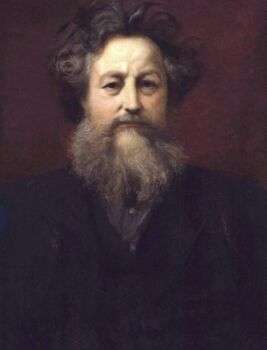
Image source: https://en.wikipedia.org/wiki/William_Morris#/media/File:William_Morris_by_Sir_William_Blake_Richmond_retouched.jpg
About His Life
Morris studied architecture, but had an unfulfilled ambition to be an artist. As a student at Oxford, John Ruskin‘s work influenced his architectural designs. In addition, he met the painter Edward Burne-Jones and through their friendship encountered the Pre-Raphaelite artists. In 1859, Morris married Jane Bearden and commissioned architect Philip Webb to build them a home. Then, in April 1861, he co-founded Morris, Marshall, Faulkner & Co. in London at 8. Red Lion Square. The company inspired the arts and crafts movement that began in Britain around 1880 and quickly spread to America, Europe, and Japan. Also he made a significant contribution to the establishment of socialism in Great Britain, as he founded the Socialist League in 1884. Later, he founded the Kelmscott Press in 1891, to which he devoted the rest of his life.
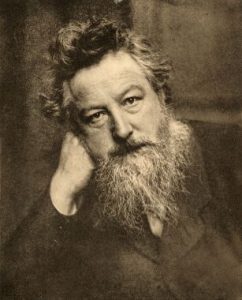
Image source: https://en.wikipedia.org/wiki/William_Morris#/media/File:William_Morris_age_53.jpg
Literature
William Morris was a prolific writer of poetry, fiction, essays, and translations of ancient and medieval texts. His best-known works include:
- The Defence of Guenevere and Other Poems (1858)
- The Earthly Paradise (1868–1870)
- A Dream of John Ball (1888)
- News from Nowhere (1890)
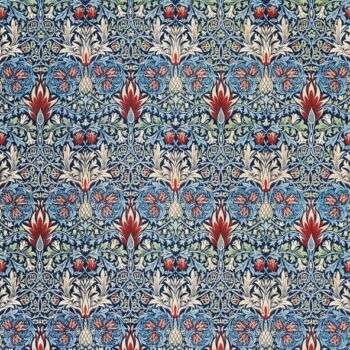
Source: https://search.creativecommons.org/photos/b74d0f05-8b84-43b1-aa3e-1029704f56b7 by The Cleveland Museum of Art
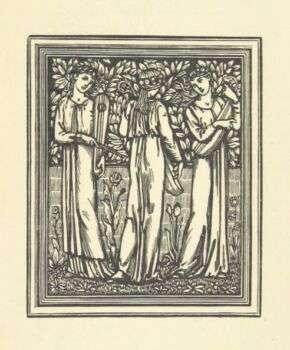
Image source: https://search.creativecommons.org/photos/6678f6d6-4640-4314-9c0b-cb11cd0cbf09 by mechanicalcurator
Textile Design
Morris created over 600 wallpaper, textile, and embroidery designs.
- Trellis (1862-1864) was the first wallpaper design that he developed. Inspiration for the piece comes from the pattern of a lattice entwined with roses in the garden of his home in Bexleyheath, Kent.
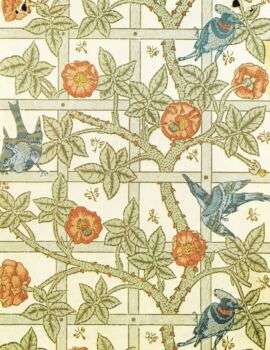
Image source: https://search.creativecommons.org/photos/ab4e11ef-e26c-4002-9320-df94733c4f5c by NinaZed
- Daisy (1864) was the first pattern to be released, a simple drawing of naively painted meadow flowers. Further, he gained inspiration from a tapestry illustrated in the 15th century Froissard Chronicle style. Similar floral forms are also found in late medieval millefleurs tapestries and early printed coats of arms.
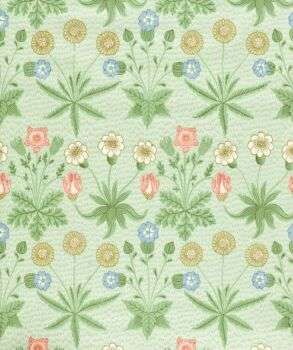
Image source: https://search.creativecommons.org/photos/dcececfa-d31d-4339-8cf8-8556e683060a by Fæ
- Fruit (also known as Pomegranate), similar to the two previous designs, it has a medieval character that links Morris’s early decorative arts with Pre-Raphaelite painters and Ruskin. Each pattern uses the shape of a plant, expressed in lush naturalism (Acanthus, Pimpernel, Jasmine) or a flatter, formalized style (Sunflower). There is also a chrysanthemum, grapes, and a garden tulip used in an extensive renovation of Holland Park No. 1 for the Greek merchant A.A. Ionides.
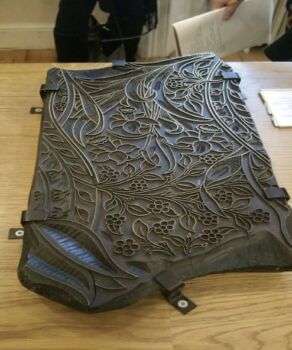
Image source: https://en.wikipedia.org/wiki/William_Morris#/media/File:A_Wooden_Pattern_for_Textile_Printing_from_William_Mors’s_Company.jpg
Furniture Designs
- Morris Chair stands out among the furniture produced by Morris and Co. It is a version of a reclining chair, with a reclining back, moderately high armrests, and notches to adjust the degree of slant desired. Futher, it was adapted from a prototype owned by Ephraim Colman in rural Sussex, England.
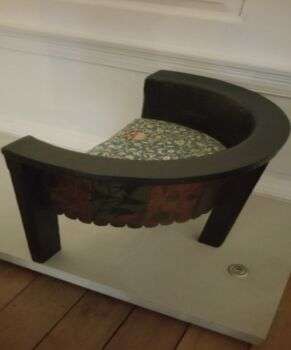
Image source: https://search.creativecommons.org/photos/338b74bb-760f-475d-bb3b-c85d43a5061d by Shani Evenstein (שני אבנשטיין)
Painting
La Belle Iseult (1858) is the only completed easel painting that William Morris produced. Further, the piece is a portrait of Jane Burden wearing a medieval dress. However, he also painted the ceiling of the Oxford Union Library building, which was painted in 1857 and subsequently rebuilt by Morris in 1875 in a modified form. Additionally, the paintings depict scenes from the legends of King Arthur.
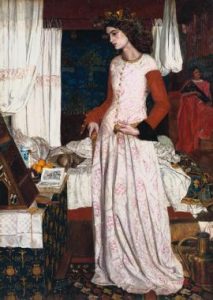
Image source: https://en.wikipedia.org/wiki/William_Morris#/media/File:William_Morris_001.jpg
In 1891, he founded Kelmscott Press with a typographic advisor typographer and type designer Emery Walker. From 1891 to 1898, the press issued 53 editions in 66 volumes. In addition, he designed three type styles for his printing press.
- Gold: A typeface modeled after Nicolas Jenson, a 15th-century French printer
- Troy: A Gothic typeface modeled after early 15th-century German printers
- Chaucer’s script: A smaller version of Troy, in which The Works of Jeffrey Chaucer were printed, in the last years of Morris’s life.
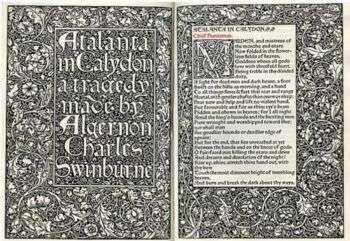
Image source: https://search.creativecommons.org/photos/edeeb07c-f0a1-417c-baaf-a84ceaa07aa9 by 50 Watts
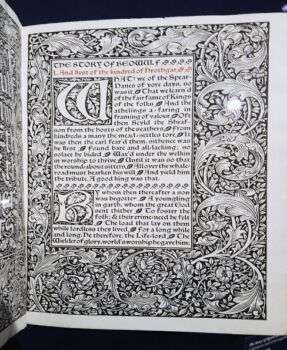
Image source: https://search.creativecommons.org/photos/1d26e4c6-4837-4aaf-ba05-63e148caa6e5 by Tim Evanson
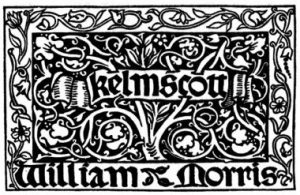
Image source:https://en.wikipedia.org/wiki/William_Ms#/media/File:KelmscottPressColophone.jpg
Info sources:
http://www.vam.ac.uk/content/articles/w/william-moris-and-wallpaper-design/
http://www.tate.org.uk/art/artworks/morris-la-belle-iseult-n04999
http://www.morrissociety.org/morris/artdecorative.html
http://www.popularwoodworking.com/woodworking-blogs/editors-blog/history-of-the-chair
http://www.vam.ac.uk/content/articles/b/biography-of-willia/
